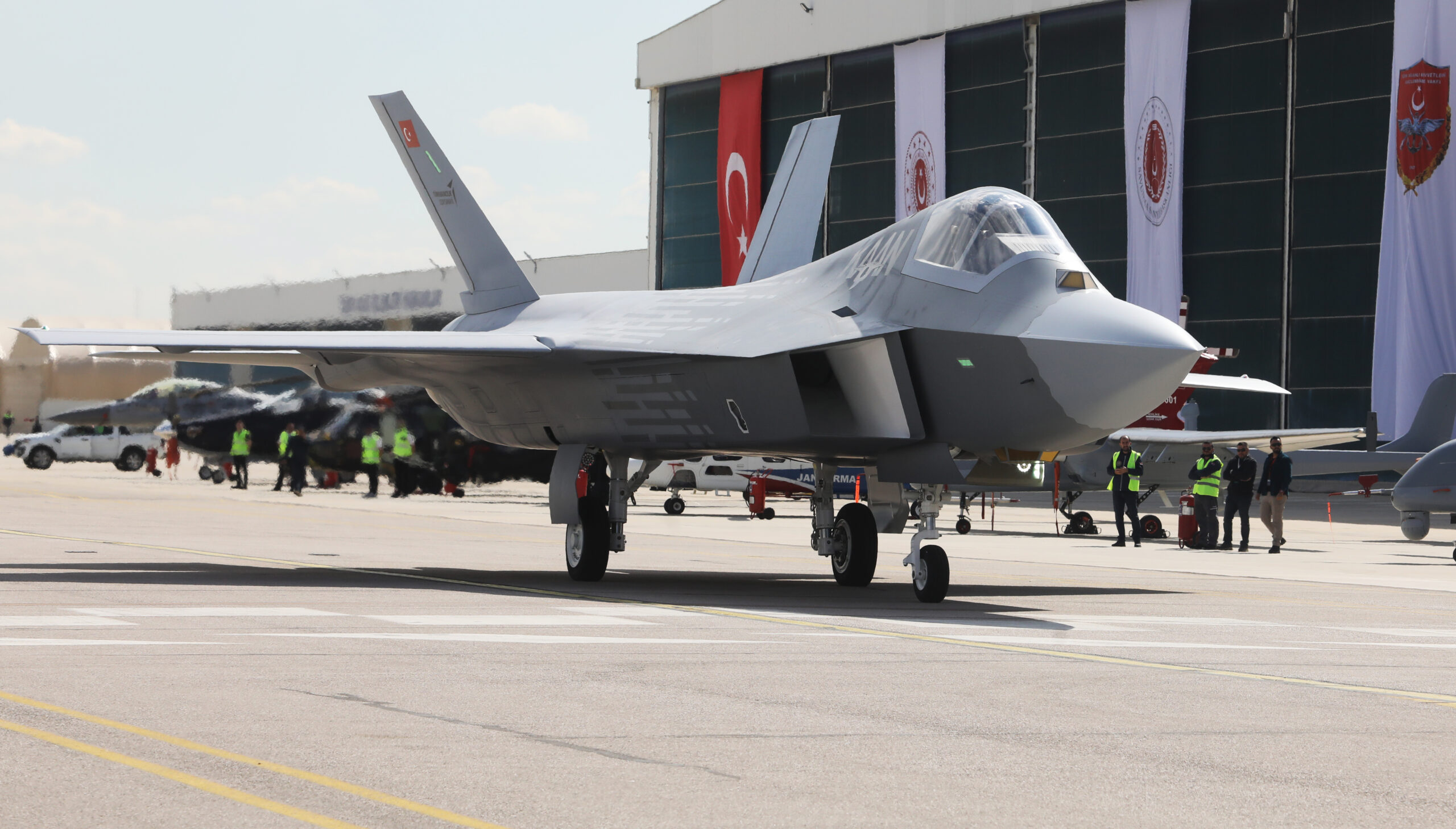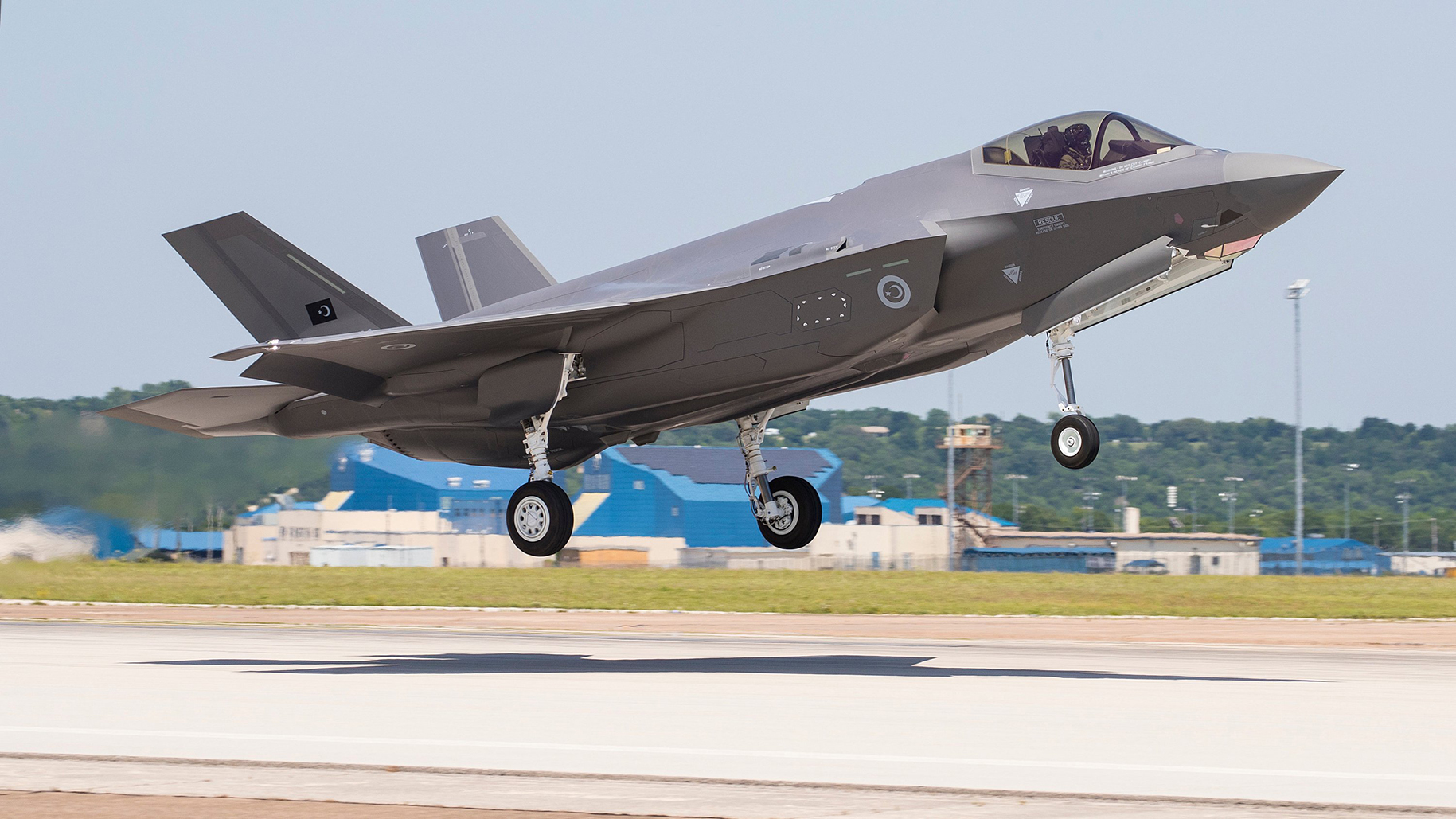Turkey could be poised to return to the F-35 Joint Strike Fighter program in what would be a remarkable turnaround after the country was ejected from the multinational effort back in 2019 after it acquired S-400 air defense systems from Russia. Once again, the S-400 is the critical factor in what happens next, with the United States seemingly stipulating that Turkey gives up these systems before it can get its hands on any F-35s.
Acting Deputy Secretary of State Victoria Nuland told CNN Türk about the possibility of Turkey rejoining the Joint Strike Fighter program during a visit to the country over the weekend.
“We were in the process of negotiating the Patriot sale, and while those negotiations were going on, Turkey went in another direction,” Nuland is reported as saying. “Frankly, if we can resolve this S-400 issue, which we want to do, the United States would be pleased to welcome Turkey back into the F-35 family. But we must solve this other issue first, and while we solve it, we must also ensure that Turkey has a strong air defense.”
The development comes only days after the announcement that the U.S. State Department had approved a possible Foreign Military Sale to Turkey of 40 new F-16C/D Block 70 fighters, plus the upgrade of 79 existing aircraft to F-16V configuration. Together with a huge package of weapons — including almost 1,000 AIM-120 Advanced Medium-Range Air-to-Air Missiles (AMRAAMs) — and other items, the deal could be worth as much as $23 billion, if executed in full. Turkey’s long path to acquiring more F-16s is something we have discussed repeatedly in the past.

Nuland reportedly also referred to the recently proposed F-16 package, noting that it still needs to be approved by U.S. Congress but that it is “a priority for the United States.” She noted that “Turkey’s development of the F-16 fleet is very important for American security, and that being fully active and participating at this level is important for burden sharing among the allies.”
Turkey had long expected to introduce the F-35 as its new-generation fighter, ultimately planning to replace many of its F-16s with the stealth jet. Turkish industry was also deeply involved in the Joint Strike Fighter production effort and at least 100 examples were expected to be procured, providing significant benefits in terms of offsets.

However, once it became clear that Ankara was not going to abandon plans to purchase Russian-made S-400 air defense systems, the writing was on the wall and Washington kicked Turkey out of the Joint Strike Fighter program in 2019.
To fill the gap, Turkey began efforts to buy more F-16s, an obvious solution based on the fact that the Turkish Air Force is already dominated by the type. However, the United States consistently rebuffed these attempts, too.

Ankara turned down an apparent Russian offer of Su-57 Felon fighters before turning to the Eurofighter Typhoon as a potential new fighter. Earlier this year, there were reports that Turkey was looking to buy around 40 Typhoons as an alternative to F-16s. It’s questionable whether such a deal would have gone through, however, due to Germany’s strict position on arms exports.
Whether in Berlin or Washington, several factors came together to block previous sales of new fighters to Turkey.
Aside from buying S-400s, U.S. lawmakers voiced concerns about Turkey’s worsening relations with Greece, its other connections with Russia and Azerbaijan (which included the deployment of F-16s to the latter country), its conduct in the Syrian civil war, and human rights abuses.

Most recently, Turkey’s opposition to Sweden joining NATO proved to be a significant hurdle.
While Russia’s full-scale invasion of Ukraine prompted Sweden to apply to join NATO, Turkey opposed the idea, pointing to what it alleged was Sweden’s sympathetic stance on Kurdish militants, including members of the Kurdistan Workers Party (PKK), considered a terrorist organization by Turkey, the European Union, and the United States.
It was fairly clear, although not outrightly stated, that the United States would only relent on the sale of new F-16s if Turkey dropped its opposition to Sweden joining NATO. Once this happened, President Joe Biden declared that he wanted lawmakers to approve the sale of F-16s to Turkey “without delay.” The announcement of that formal approval of the sale from the administration came Friday.

While Turkey has campaigned to get more F-16s for some years now, the potential offer of F-35s could change things once again. After all, the F-16s were sought as a substitute for the Joint Strike Fighter, after Turkey had been booted out of the program.
Bearing in mind Turkey’s strategic rivalry with its neighbor Greece, also a NATO member, the potential to return to the F-35 fold could be very attractive indeed. You can read all about how tensions between Greece and Turkey are reflected in the countries’ respective air forces in this previous feature.
After all, on the same day that U.S. State Department approval of more F-16s for Turkey was announced, it was revealed that Greece had been given the green light to acquire as many as 40 F-35As and related equipment at an estimated cost of up to $8.6 billion. Again, such a deal would need Congressional approval, but in the case of Greece, this is likely straightforward.
Greece had previously expressed its ambitions to add F-35s to the Hellenic Air Force fleet, with reports of a formal request for information from the Pentagon back in late 2020. At the time, it was suggested that Greece was looking at the “immediate purchase” of either new or former U.S. Air Force F-35As, or perhaps a mixture of both.
Should Greece move forward with an F-35 buy, this may well encourage Turkey to finally give up its S-400s and consider the same.
Nuland’s reported statement suggests that, instead of the S-400, the United States may be willing to offer Patriot air defense systems once again, to “ensure that Turkey has a strong air defense.” The Patriot had been offered to Turkey on several previous occasions, including as a direct alternative to the S-400.

Turkey may yet feel that swapping its S-400s for F-35s will offer long-term strategic and operational advantages, especially as it faces an increasingly urgent requirement for new fighters.
Ankara does have a new-generation crewed fighter program of its own, the TF-X Kaan, a low-observable design, which had been expected to make a maiden flight before the end of 2023. While the fighter prototype started its engines for the first time in March 2023 and has conducted a first taxi test, it’s unclear when it will take flight.
Moreover, there are questions about the viability of the TF-X program as a whole, especially in terms of its engines. Turkish officials recently stated that they wanted to see the TF-X powered by a domestically produced engine. However, improved relations with the United States could yet see export approval for a U.S.-made engine.

For the time being, Turkey is also pursuing the TF-X alone, but attracting a foreign partner could also help tilt the balance of favor toward the domestic fighter program. Even so, the TF-X is not likely to begin to enter service until 2030 at the earliest.
Setting aside the TF-X, there remains the issue of costs and how Ankara would pay for new F-16s and upgrades, as well as F-35s, plus the various advanced uncrewed aircraft programs that Turkey’s industry is also working on. These include the ANKA-3, a low-observable flying wing unmanned combat air vehicle (UCAV), and the fighter-like Bayraktar Kizilelma drone. Domestic programs such as these also reflect Turkey’s growing requirement for self-control over its combat capabilities, something that is far from straightforward with the F-35.
Even bearing in mind the current delays in the F-35 program — especially relating to the forthcoming Block 4 capability standard and the Technology Refresh-3 (TR-3) hardware and software suite that’s needed to realize it — it seems highly likely that the Joint Strike Fighter would be a quicker route to providing a new-generation fighter than the TF-X, as well as one that offers significantly greater capabilities, especially in terms of stealth and advanced sensors.

Around 30 F-35As were previously built to help meet the original Turkish requirement for around 100 aircraft. Most of these are no longer available, however, with a significant portion having been transferred to the U.S. Air Force. Those aircraft that appear to still be in storage are likely built to an earlier production standard and would almost certainly require significant updates before delivery.
Still, waiting for new F-35s to become available could still bring benefits to Turkey. After all, Lockheed anticipates that by the 2030s, more than 600 F-35s will be operated from more than 10 European countries, including two U.S. Air Force squadrons in the United Kingdom. Turkey would therefore be able to benefit from a significant European operator footprint and, potentially, could reinstate production for F-35 components, a lucrative aspect of the Joint Strike Fighter program that it lost in 2019.
The potential return of the F-35 to Turkey’s future fighter equation was unexpected, to say the least. With F-16s already on offer and a homegrown fighter scheduled program well underway, Turkey now has to decide what it wants its future combat fleet to look like and also whether it’s happy to trade the capabilities of the S-400 for the F-35.
Contact the author: thomas@thewarzone.com
